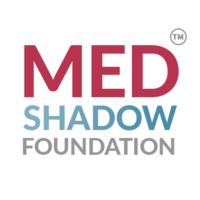Welcome to the FDA Side Effects Update. This series is designed to keep you informed about the latest safety advisories and newly documented side effects of your medications. In this installment, we’re highlighting safety updates concerning Depakote, Leqembi, Norditropin, Ozempic, Qelbree, Rocklatan and Xtandi.
How to Read This Report
This report is prepared using the most recent information posted in the SrLC database. It highlights recent safety labeling changes. It includes only newly reported side effects and safety information; additional side effects and warnings will appear on the drug label. Not all recent changes to the SrLC database or the label may be listed here. For all changes and the complete list of warnings and side effects, please click on the drug label link.
Each of the items (approval and update dates, drug names, etc.) contained in this report are obtained from the SrLC. The side effects and medication descriptions are simplified and made
clearer, if needed. Sometimes, additional sources, like a medical dictionary, may be used to translate technical medical phrases. Other sources (company news, FDA press releases, etc.) may be used to learn about some label changes.
Drug Name: Depakote (active ingredient: divalproex sodium) and Depakote Extended Release capsules
Initial FDA Approval: 1989
Side Effect Update Date: January 23, 2025
Medication Description: Treats seizure disorders and bipolar mood swings. Less frequently, Depakote is used to prevent migraine headaches.
Updated Side Effects/Safety Information: Drug-induced hyperpigmentation, or dark patches on the skin, was added as an adverse reaction in the postmarketing experience section.
FDA Safety Announcement: Depakote FDA Safety Label Change and Revised Drug Label
Depakote ER FDA Safety Label Change and Revised Drug Label
Drug Name: Leqembi (active ingredient: lecanemab-irmb) intravenous infusion
Initial FDA Approval: 2023
Side Effect Update Date: January 24, 2025
Medication Description: Used to reduce amyloid beta plaque, a protein found in the brain of people with Alzheimer’s disease, in patients in early stages of the disease
Updated Side Effects/Safety Information: The boxed warning was modified to add that the severe side effect of ARIA (Amyloid Related Imaging Abnormalities) can be fatal. ARIA often leads to temporary swelling or a buildup of fluid in certain areas of the brain. This is known as ARIA-E, where “E” stands for edema (swelling) and effusion (fluid leakage). In rare cases, significant bleeding may also occur.
New guidance for clinicians advises that because ARIA-E can cause symptoms that can mimic an ischemic stroke, practitioners should consider whether such symptoms could be due to ARIA-E before giving thrombolytic (stroke) therapy to a patient being treated with Leqembi.
Essential Extras: ARIA-E usually occurs early in treatment and can occur without symptoms, although serious and life-threatening events like seizures can occur.
FDA Safety Announcement: Leqembi FDA Safety Label Change and Revised Drug Label
Drug Name: Norditropin (active ingredient: somatropin recombinant) subcutaneous injection
Initial FDA Approval: 1987
Side Effect Update Date: January 31, 2025
Medication Description: Treats children or adults with growth hormone deficiency. Also treats children who are not growing or with short stature associated with various conditions, including Noonan or Turner syndrome.
Updated Side Effects/Safety Information: Gynecomastia (breast enlargement) was added as an adverse reaction in the postmarketing experience section. Also, storage instructions were modified to advise not storing the medication next to the refrigerator cooling element.
FDA Safety Announcement: Norditropin FDA Safety Label Change and Revised Drug Label
Drug Name: Ozempic (active ingredient: semaglutide) subcutaneous injection
Initial FDA Approval: 2017
Side Effect Update Date: January 28, 2025
Medication Description: Treats type 2 diabetes in adults. Also used to reduce the risk of major cardiovascular events in adults with cardiovascular disease and type 2 diabetes. Recently approved to reduce the risk of worsening kidney disease and the risk of cardiovascular death in adults with type 2 diabetes and chronic kidney disease.
Updated Side Effects/Safety Information: Clinical trials results were added for kidney outcomes for patients with type 2 diabetes and chronic kidney disease. Additional changes include:
- The “Pancreatitis” warning section has been renamed “Acute Pancreatitis.” Acute pancreatitis, which has been experienced by patients during clinical trials, is a sudden inflammation of the pancreas. (Of note, a “chronic pancreatitis” case was mentioned in the previous label revision from November 2024, but is not in this version. The clinical trial results have been modified for this section to focus only on cases of acute pancreatitis.) The Patient Medication Guide adds that symptoms of acute pancreatitis include severe abdominal pain that may radiate to the back, and which may or may not be accompanied by vomiting.
- A new section warns about the risk of severe gastrointestinal adverse reactions.
- A new section warns about the risk of acute kidney injury due to fluid depletion, especially when someone first starts taking Ozempic. The label states the effect is usually due to dehydration associated with gastrointestinal adverse reactions. The revised patient counseling section of the medication guide adds that symptoms of acute kidney injury include persistent (or extended) nausea, vomiting, and diarrhea. In severe cases, patients have required dialysis as a medical intervention.
- Two new adverse reactions were added: dysesthesia (abnormal sense of touch) and alopecia (hair loss) were added to the list of adverse reactions in the postmarketing experience section of the label.
FDA Safety Announcement: FDA Ozempic Safety Label Change and Revised Drug Label
Drug Name: Qelbree (active ingredient: viloxazine) extended-release capsules
Initial FDA Approval: 2021
Side Effect Update Date: January 23, 2025
Medication Description: Treats Attention Deficit Hyperactivity Disorder (ADHD) in adults and pediatric patients aged six and up. Qelbree is a non-stimulant medication.
Updated Side Effects/Safety Information: Provides the results of a small lactation study (15 participants) showing that viloxazine passes into breast milk at a low level. At this time, viloxazine effects on the breastfed infant or the effects on milk production are not known.
FDA Safety Announcement: Qelbree FDA Safety Label Change and Revised Drug Label
Drug Name: Rocklatan (active ingredients: latanoprost; netarsudil dimesylate) ophthalmic drops
Initial FDA Approval: 2019
Side Effect Update Date: January 24, 2025
Medication Description: Treats open-angle glaucoma or ocular hypertension. These are conditions in which increased pressure in the eye can damage the optic nerve and lead to vision loss.
Updated Side Effects/Safety Information: Warns that the ingredient netarsudil has been associated with epithelial corneal edema (corneal swelling), described as honeycomb or bullous. Patients are advised to notify their physician if they experience eye pain or decreased vision while using Rocklatan. Epithelial corneal edema typically resolves upon discontinuation of the medication.
Essential Extras: Many people use latanoprost-containing eye drops for treating ocular hypertension. Latanoprost is not associated with this side effect update; the update is only for Rocklatan, an eye drop product containing the ingredient netarsudil.
FDA Safety Announcement: Rocklatan FDA Safety Label Change and Revised Drug Label
Drug Name: Xtandi (active ingredient: enzalutamide) capsules and tablets
Initial FDA Approval: 2012
Side Effect Update Date: January 22, 2025
Medication Description: Treats prostate cancer.
Updated Side Effects/Safety Information: A new section warns of the severe and possibly life-threatening risk of dysphagia (difficulty swallowing) or choking because of the size of the product. Patients are advised NOT to cut, crush, or chew the tablets or pills, and to take each pill whole with a sufficient amount of water to ensure that all medication is successfully swallowed. Dysphagia and choking were also added to the postmarketing experience section. Patients should inform their healthcare provider if they have difficulty swallowing the prescribed product.
Essential Extras: Xtandi may be prescribed as a small round tablet (more tablets per dose) or as larger oblong tablets and capsules (less tablets or capsules per dose).
FDA Safety Announcement: Xtandi FDA Safety Label Change and Revised Drug Label






